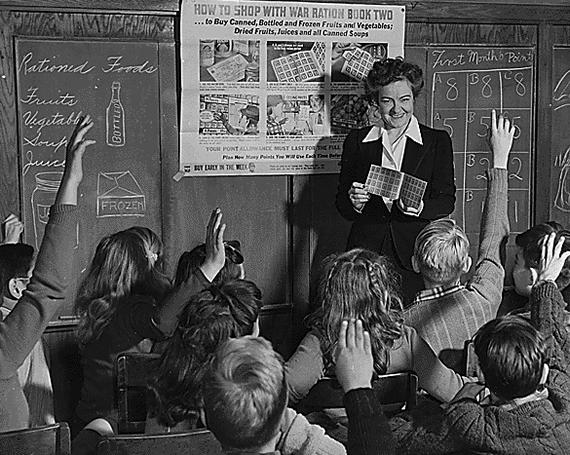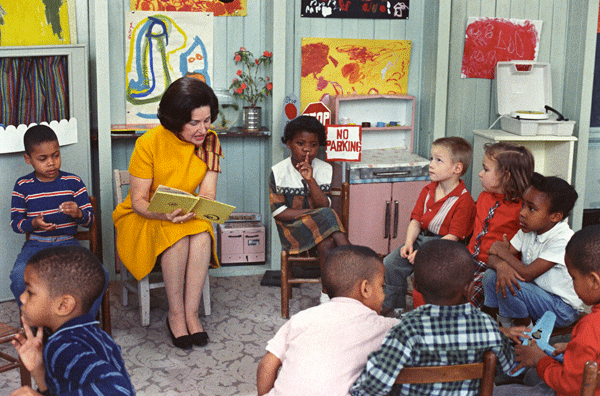Educational Resources |

We invite students in grades 5 through 12 to use this page as a study guide while they delve into the history pages linked from History@fedgov. We also recommend that teachers consult this page when preparing lesson plans and history or civics units.
Students: Ten project ideas are listed below. And check back regularly - more will be added periodically. If you decide to do one of them, or if you devise a project of your own, ask your teacher to allow you to submit the results as an assignment. You could also do this as a group project. History@fedgov would love to see the product of your efforts. Please feel free to email it to us, preferably as a Word or similar attachment. Be sure to include your name, your grade, and the name and location of your school, and send it to SHFGoutreach@gmail.com. We will keep your report private and will not publish any material that you send to us without your written permission.
Teachers: One of the goals of History@fedgov is to add more educational content that will utilize the unique character of our Web page to create a range of tools for teaching and learning at all ages and grade levels. Watch this space!
TEN STUDENT PROJECT IDEAS
1. Think about these questions as you read a particular agency’s history:
-- How was it created?
-- Why was it created?
-- How did it evolve over time? Did its mission change?
2. When you find an agency whose history is particularly interesting, dig deeper. Wikipedia is usually a good starting point, and a search engine such as Google can lead you to many other sources. Going back to the mid-1990s, the Wayback Machine (https://archive.org/web/) at the Internet Archives has preserved over 300 billion Websites, many of which are no longer available elsewhere. This includes all federal agency Websites. And don’t neglect your school or public library. Librarians are trained to guide people to sources that will answer their questions, and they are very skilled at online searching. Talk to your teacher about doing this as a school project.
3. You didn’t see a history Web page for an agency you are interested in? You can email or write to the agency director and ask him or her if they can provide any printed historical information. You could suggest that they create a history page. Then research and write your own history.
4. You will see that there are 15 Cabinet Departments listed, containing over 150 histories of their subordinate agencies and offices. You will also see many histories of agencies that are not part of any Department. As you look at one of these, think about why it was made an independent agency. Can you imagine it as a part of a particular Department?
5. What is the most interesting or amazing fact that you learned about an agency? Please send your findings, identifying the source, to us at SHFGoutreach@gmail.com. We will publish selected facts on our educational page.
6. There are a lot of government agencies that no longer exist. Many of them were created to meet a national crisis and were abolished when no longer needed. They are not represented here because there is no current federal agency maintaining their histories. The New Deal alone spawned hundreds during the Great Depression of the 1930s, and many more were created during World Wars I and II. There is a lot of information about them online. Using a search engine, Wikipedia, and your library, select one of them and write a report about it.
7. After you have studied a number of agencies, did you find one that had a particularly positive impact on the country? Was there one that had a more negative effect? Write about your choice for each, including your reasons.
8. Pick out an agency, and then try to answer this question about it: How well has the agency lived up to its promise? Compare its performance with the mission or goals statement provided on its Web page. Examine the Act of Congress or presidential Executive Order that created it. Write up your findings.
9. Look over the list of history pages and select three that particularly interest you. They should be histories that include a brief (one to ten or so pages) narrative history of the agency. For example, you might pick out Cabinet Departments, or agencies that come under the same Department. The histories will each open in a new tab. Keep the tabs open and study each one. Take notes on what seem to you to be the most important events in their history. Then compare their histories. What similarities do you see? Are there striking contrasts? Write up your findings in a report for your school.
10. Pick out five history pages that are particularly attractive. Do they catch your eye and look good on your device? Are they well organized and easy to navigate? Do their features work well on your computer, tablet, or smart phone? Make a list of what you like about each one. Then rank them by quality, with the best at the top. Explain your ranking for each one. After you finish, think about how you would design a history page for a particular agency if you were a federal government historian. Design a model page.

